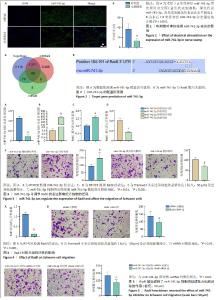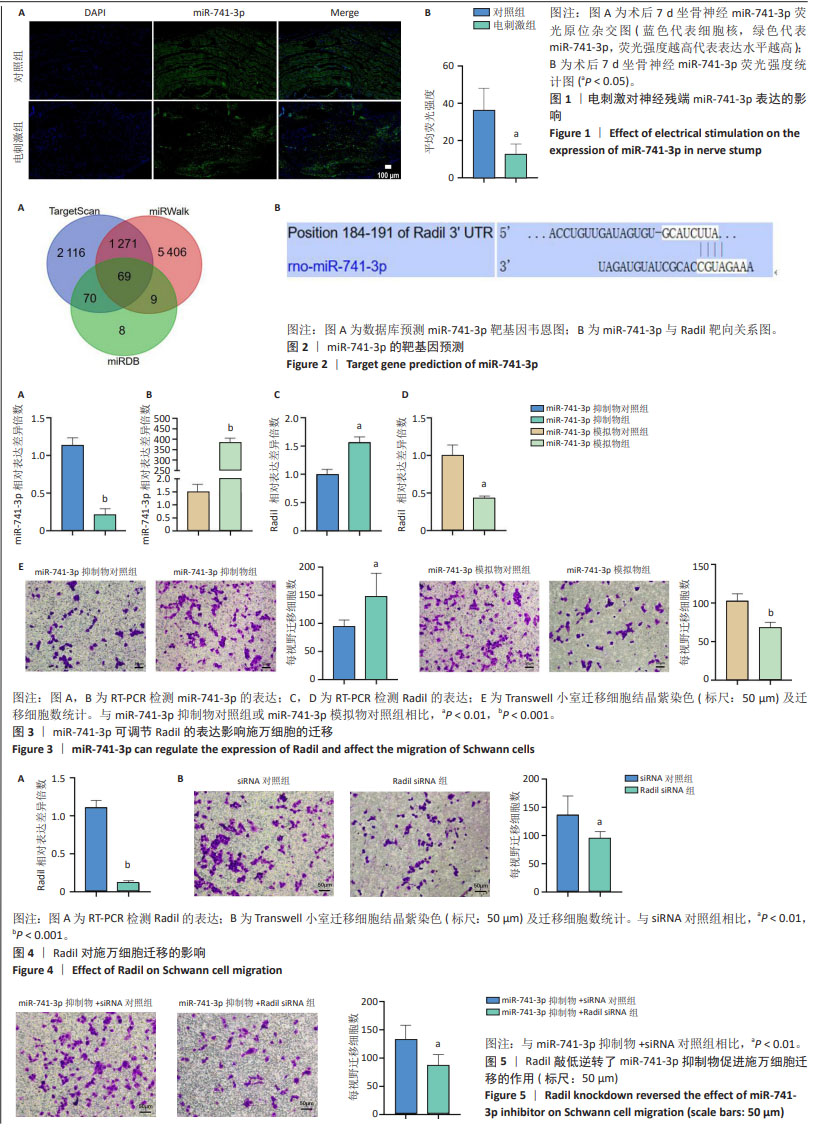[1] JAVEED S, FARAJI AH, DY C, et al. Application of electrical stimulation for peripheral nerve regeneration: Stimulation parameters and future horizons. Interdiscip Neurosur. 2021;24:101117.
[2] PADOVANO WM, DENGLER J, PATTERSON MM, et al. Incidence of Nerve Injury After Extremity Trauma in the United States. Hand (N Y). 2022;17(4):615-623.
[3] JUCKETT L, SAFFARI TM, ORMSETH B, et al. The Effect of Electrical Stimulation on Nerve Regeneration Following Peripheral Nerve Injury. Biomolecules. 2022;12(12):1856.
[4] OLIVEIRA JT, YANICK C, WEIN N, et al. Neuron-Schwann cell interactions in peripheral nervous system homeostasis, disease, and preclinical treatment. Front Cell Neurosci. 2023;17:1248922.
[5] JESSEN KR, MIRSKY R, LLOYD AC. Schwann Cells: Development and Role in Nerve Repair. Cold Spring Harb Perspect Biol. 2015;7(7):a020487.
[6] JESSEN KR, ARTHUR-FARRAJ P. Repair Schwann cell update: Adaptive reprogramming, EMT, and stemness in regenerating nerves. Glia. 2019; 67(3):421-437.
[7] MADDURI S, GANDER B. Schwann cell delivery of neurotrophic factors for peripheral nerve regeneration. J Peripher Nerv Syst. 2010;15(2): 93-103.
[8] FISSEL JA, FARAH MH. The influence of BACE1 on macrophage recruitment and activity in the injured peripheral nerve. J Neuroinflammation. 2021;18(1):71.
[9] NOCERA G, JACOB C. Mechanisms of Schwann cell plasticity involved in peripheral nerve repair after injury. Cell Mol Life Sci. 2020;77(20): 3977-3989.
[10] BARTEL DP. MicroRNAs: genomics, biogenesis, mechanism, and function. Cell. 2004;116(2):281-297.
[11] AMBROS V. The functions of animal microRNAs. Nature. 2004;431 (7006):350-355.
[12] GU X, GUO H, ZENG C, et al. Identification and validation of MicroRNA-mRNA Networks in Dorsal Root Ganglia after Peripheral Nerve Injury. Int J Med Sci. 2022;19(8):1275-1289.
[13] SHEN Y, CHENG Z, CHEN S, et al. Dysregulated miR-29a-3p/PMP22 Modulates Schwann Cell Proliferation and Migration During Peripheral Nerve Regeneration. Mol Neurobiol. 2022;59(2):1058-1072.
[14] CHU XL, SONG XZ, LI Q, et al. Basic mechanisms of peripheral nerve injury and treatment via electrical stimulation. Neural Regen Res. 2022; 17(10):2185-2193.
[15] 田冲.电刺激诱导的microRNA对周围神经损伤修复的影响[D].承德:承德医学院,2021.
[16] 朱亚琼,金壮,汪靖,等.超声引导注射富血小板血浆修复坐骨神经挤压伤[J].中国组织工程研究,2020,24(20):3196-3201.
[17] 孔亚敏,严隽陶.坐骨神经损伤模型的量化研究[J].神经损伤与功能重建,2021,16(5):249-252,273.
[18] ZHANG RR, CHEN SL, CHENG ZC, et al. Characteristics of cytokines in the sciatic nerve stumps and DRGs after rat sciatic nerve crush injury. Mil Med Res. 2020;7(1):57.
[19] NI L, YAO Z, ZHAO Y, et al. Electrical stimulation therapy for peripheral nerve injury. Front Neurol. 2023;14:1081458.
[20] SONG S, MCCONNELL KW, AMORES D, et al. Electrical stimulation of human neural stem cells via conductive polymer nerve guides enhances peripheral nerve recovery. Biomaterials. 2021;275:120982.
[21] ELABD R, ALABDULKARIM A, ALSABAH S, et al. Role of Electrical Stimulation in Peripheral Nerve Regeneration: A Systematic Review. Plast Reconstr Surg Glob Open. 2022;10(3):e4115.
[22] LIU M, LI P, JIA Y, et al. Role of Non-coding RNAs in Axon Regeneration after Peripheral Nerve Injury. Int J Biol Sci. 2022;18(8):3435-3446.
[23] BORGER A, STADLMAYR S, HAERTINGER M, et al. How miRNAs Regulate Schwann Cells during Peripheral Nerve Regeneration-A Systemic Review. Int J Mol Sci. 2022;23(7):3440.
[24] GHIBAUDI M, BOIDO M, VERCELLI A. Functional integration of complex miRNA networks in central and peripheral lesion and axonal regeneration. Prog Neurobiol. 2017;158:69-93.
[25] LIU YP, LUO ZR, WANG C, et al. Electroacupuncture Promoted Nerve Repair After Peripheral Nerve Injury by Regulating miR-1b and Its Target Brain-Derived Neurotrophic Factor. Front Neurosci. 2020;14:525144.
[26] OU M, FAN W, SUN F, et al. Nasal Delivery of AntagomiR-741 Protects Against the Radiation-Induced Brain Injury in Mice. Radiat Res. 2021; 195(4):355-365.
[27] WEN X, XIE H, GUI R, et al. CircRNA-011235 Counteracts The Deleterious Effect of Irradiation Treatment on Bone Mesenchymal Stem Cells by Regulating The miR-741-3p/CDK6 Pathway. Cell J. 2022; 24(1):15-21.
[28] SMOLEN GA, SCHOTT BJ, STEWART RA, et al. A Rap GTPase interactor, RADIL, mediates migration of neural crest precursors. Genes Dev. 2007;21(17):2131-2136.
[29] AHMED SM, THÉRIAULT BL, UPPALAPATI M, et al. KIF14 negatively regulates Rap1a-Radil signaling during breast cancer progression. J Cell Biol. 2012;199(6):951-967.
[30] BALAKRISHNAN A, BELFIORE L, CHU TH, et al. Insights Into the Role and Potential of Schwann Cells for Peripheral Nerve Repair From Studies of Development and Injury. Front Mol Neurosci. 2021;13: 608442.
[31] NAPOLI I, NOON LA, RIBEIRO S, et al. A central role for the ERK-signaling pathway in controlling Schwann cell plasticity and peripheral nerve regeneration in vivo. Neuron. 2012;73(4):729-742.
[32] MYERS RR, SEKIGUCHI Y, KIKUCHI S, et al. Inhibition of p38 MAP kinase activity enhances axonal regeneration. Exp Neurol. 2003;184(2): 606-614.
[33] WOOD MD, MACKINNON SE. Pathways regulating modality-specific axonal regeneration in peripheral nerve. Exp Neurol. 2015;265: 171-175.
[34] CHEN P, PIAO X, BONALDO P. Role of macrophages in Wallerian degeneration and axonal regeneration after peripheral nerve injury. Acta Neuropathol. 2015;130(5):605-618.
[35] JESSEN KR, MIRSKY R. The repair Schwann cell and its function in regenerating nerves. J Physiol. 2016;594(13):3521-3531. |

